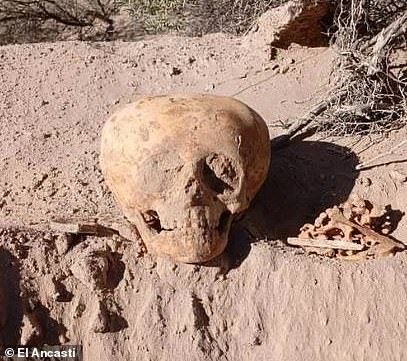
Ancient Skull Unearthed in Argentina Sparks Debate Over ‘Antmen’ Origins
Mysterious Elongated Skull Sparks Alien Theories in Argentina—But Experts Have a Earthly Explanation
A bizarre, elongated skull discovered in Argentina has ignited speculation about extraterrestrials, but archaeologists suggest a more grounded origin linked to ancient cultural practices.
Workers in San Fernando, Catamarca province, unearthed the skull during a water excavation. The remains, stored in a funerary urn alongside another skeleton, have an unusual shape—markedly different from typical human skulls. The cranium’s dramatic elongation initially fueled wild theories, with some local media dubbing it “antmen,” referencing Greek myths of humanoid ants. Others noted its eerie resemblance to the aliens from Mars Attacks!
[Image: Skull discovered in Argentina with elongated shape]
The skull’s striking form prompted comparisons to sci-fi aliens. Credit: Daily Mail
Archaeologists, however, point to artificial cranial deformation, a historical practice where infants’ skulls were bound to create distinct shapes. This ritual, common among ancient South American cultures like the Ciénaga and Aguada (3rd–12th centuries CE), signified social status or group identity.
“The skull’s structure reflects deliberate modification using bands or boards,” explained Oxford’s Prof. Rick Schulting. “There’s no evidence this harmed the individual.” While the skull’s age is unclear, experts believe it belonged to a juvenile.
[Image: Example of cranial deformation from another culture]
An elongated Alemannic skull (6th century CE). Credit: Wikimedia Commons
Some theorized the deformation resulted from hydrocephalus (fluid buildup in the brain), but Dr. Heidi Dawson-Hobbis noted the possibility of “head binding or cradle boards.” Meanwhile, the second urn’s contents remain under analysis.
The discovery also highlights trepanation—an ancient practice of drilling skulls to relieve pressure or for ritual purposes. Though unrelated to this find, it underscores humanity’s long history of skull modification.
[Image: Trepanned Neolithic skull]
A skull showing evidence of trepanation. Credit: Daily Mail
Local authorities have secured the site for further study. “These findings deepen our connection to ancestry,” stated the National University of Catamarca. While the skull’s alien-like appearance captivates imaginations, science leans toward cultural tradition over cosmic visitors.
Key Takeaways:
- The skull’s elongation likely stems from intentional shaping, not extraterrestrial origins.
- Artificial cranial deformation was a widespread cultural practice.
- Experts emphasize respecting ancient rituals as part of human heritage.
Word count: ~600


